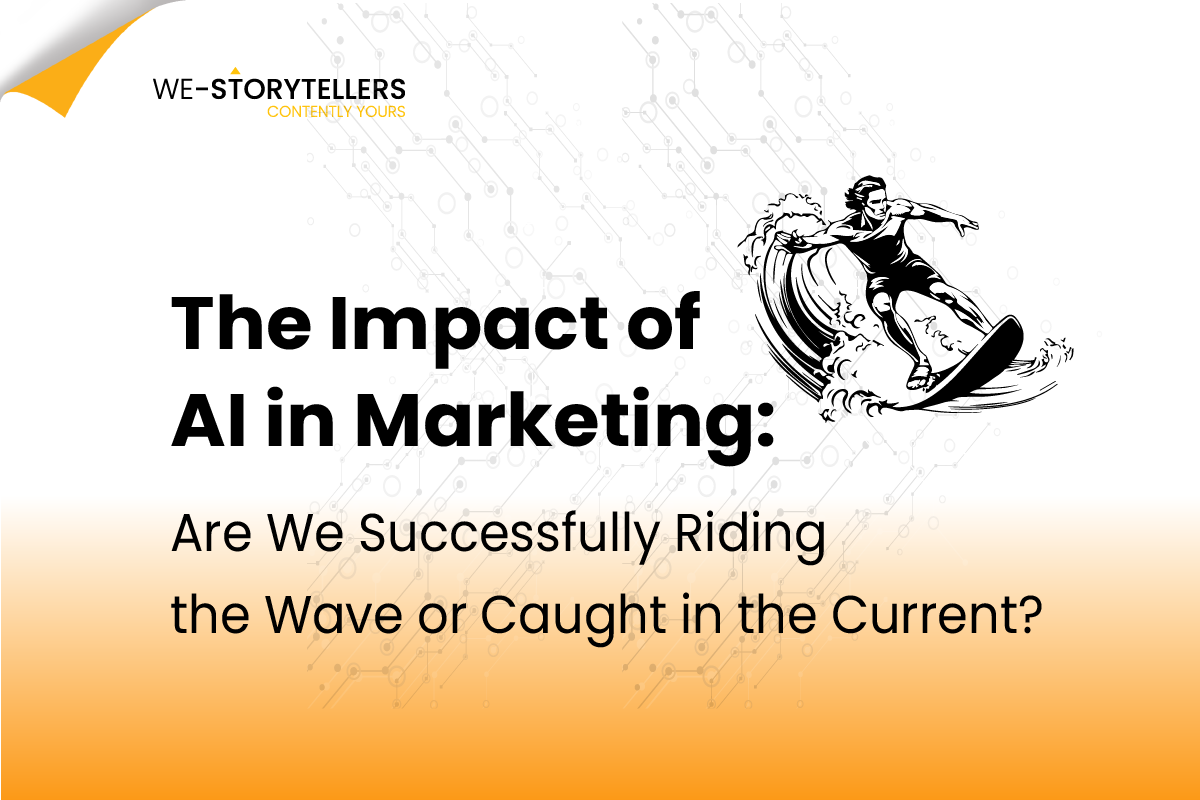The impact of Artificial Intelligence (AI) on marketers is reshaping the way they approach their craft. From data analytics to customer engagement, AI is influencing every aspect of marketing, offering numerous opportunities for efficiency and innovation. Marketers now have access to advanced algorithms that can sift through vast datasets, uncover hidden patterns, and generate actionable insights at lightning speed.
However, while AI technology continues to enhance certain aspects of marketing based on existing patterns and data, human intelligence remains unparalleled to create authentic, emotionally resonant content that fosters meaningful connections with the audience.
A recent McKinsey survey also revealed that only 10%–14% of companies consistently deploy generative AI in their marketing and sales initiatives.
What’s Sticking and What’s Shifting
There’s no denying the fact that AI tools can help marketers significantly in analyzing large sets of customer data, identify patterns, and create efficient marketing campaigns. It can also automate the process of creating reports and dashboards, saving marketers time and effort.
However, AI struggles to generate authentic, human-centric, and engaging narratives that connect, engage, and drive action.
Customers today expect authenticity before connecting emotionally with any brand. That said, AI can misrepresent data and deliver biased stories. Besides, it has certain limitations such as:
- Creating an emotional connection: AI-generated content lacks emotions, so it fails to meet customers’ unique creative needs. The result? AI-generated business stories fail to convert impressions into customer engagement and shares.
- Injecting brand voice and personality: Every brand has a voice and tone. AI can struggle to capture a brand’s unique voice and personality.
- Addressing security threats: AI tools are also vulnerable to malicious security attacks. For instance, Generative AI can encounter prompt injection attacks, manipulating AI responses and potentially damaging a brand’s reputation, affecting customer confidence.
- Leveraging the power of storytelling: In most cases, AI content sounds similar and repetitive. Monotone, plain word flow, and use of common words can trigger a negative response from customers. This can influence customers to disengage themselves from the brand content if they find the human element missing.
Playing it Smart: Using AI Wisely
Marketers can significantly streamline their time and effort by using AI in various aspects. Here are some strategies for effectively deploying AI in marketing:
- Content ideation and research: AI-powered tools can analyze vast amounts of data to identify trending topics, keywords, and audience preferences, helping marketers generate ideas for content that align with their target audience’s interests.
- Content optimization: AI can analyze content performance metrics and user behavior to optimize existing content for search engines and user engagement. AI-powered tools can suggest improvements in keywords, formatting, and structure to enhance content visibility and effectiveness, allowing marketers to refine their content strategy efficiently.
- Content distribution and promotion: AI-driven content distribution platforms can automate the process of scheduling, publishing, and promoting content across various channels, including social media, email, and websites. Marketers can save time and reach a broader audience by leveraging AI to streamline content distribution tasks and optimize promotional strategies.
- Performance analytics and insights: AI-powered analytics tools can provide in-depth insights into content performance, audience engagement, and ROI metrics. By automating the analysis of data, marketers can quickly identify trends, patterns, and opportunities for optimization, enabling data-driven decision-making and continuous improvement in their content marketing efforts.
Striking the Balance
Recognizing the genuine risks associated with generative AI is crucial, but it’s equally important to act. For marketers, this means adopting a strategic approach:
- Task Analysis: Before assigning marketing tasks, carefully analyze their nature and requirements. Consider whether leveraging AI could effectively fulfill objectives such as audience connection, engagement, and action.
- Prioritization: Understand the distinction between tasks that demand human intervention and those that can benefit from AI assistance. Rather than outright replacement, look for a balanced approach, where AI augments human efforts.
- Continuous Evaluation: Regularly assess your content strategy to ensure optimal task prioritization and avoid over-reliance on AI. Remember, in marketing, originality and creativity are key.
By implementing these steps, marketers can effectively use AI to optimize their workflows, while simultaneously preserving the essence of authentic, human-driven marketing strategies.


